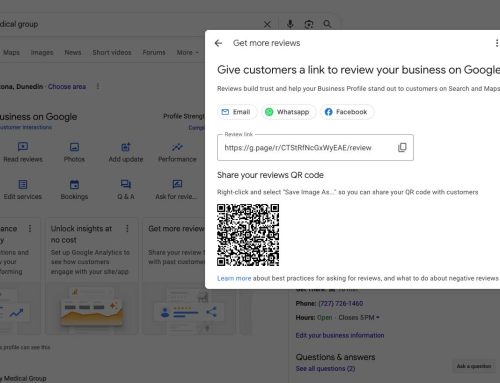
Spoiler: The answer people give on your contact form is usually wrong—and it could be costing you marketing dollars.
"How did you hear about us?"
It's a classic question, baked into contact forms across nearly every industry. And for years, marketers and business owners have relied on it to make major decisions—like which ad platforms to invest in, what campaigns to scale, and what content to double down on.
But here's the truth:
That answer your customer gave?
It's probably not true.
At Visual Realm, we've worked with hundreds of businesses—from startups to established enterprises—and we've seen it over and over again: the "how did you hear about us" field is wildly inaccurate. And worse, it creates a false sense of confidence in marketing data that leads teams down the wrong path.
Let's unpack why this happens, what you should do instead, and how modern attribution methods can give you a clearer picture of what's really driving growth.
The Real Purpose of Attribution
Before we get into the flaws, let's remember why this matters in the first place.
Marketing attribution is the process of identifying which touchpoints—ads, organic search, referrals, social content, emails, etc.—contributed to a customer taking action (like submitting a form, making a purchase, or booking a call).
Good attribution helps you:
– Double down on what's working
– Stop wasting money on what's not
– Understand the buyer journey
– Make smarter creative and targeting decisions
So if your attribution model is broken or biased… your strategy probably is too.
Why Most People Aren't Truthful on Forms

When someone fills out your form and selects "Google" or "Friend" or "Social Media" from your drop-down menu, it feels like you've captured a valuable data point.
But that answer is usually:
– Incomplete
– Vague
– Or flat-out wrong
Here's why.
Memory Bias
People don't remember the first time they encountered your brand—especially if they've had a long or multi-channel journey. Maybe they saw your logo on Instagram weeks ago, then saw a friend repost your content on Facebook, clicked a blog link on Google, and finally filled out your form.
Recency Bias
People tend to recall the most recent information more easily than older information. So if someone Googled your name to find your site—even if they originally saw you on a Facebook ad—they'll likely select "Google."
Form Fatigue or Guessing
Many users speed through forms. If your attribution question is optional or has a dropdown menu, they're likely to pick whatever feels easiest or most familiar—even if it's not accurate.
Dropdown Limitations
Generic dropdowns like:
– Google
– Facebook
– Word of Mouth
– Other
…lump together dozens of nuanced channels and interactions. "Facebook," for instance, could mean an organic post, a boosted ad, a community group, or even a Messenger conversation.
Multi-Touch Confusion
Modern marketing is multi-channel by nature. People might encounter your brand 5–10 times before converting. Expecting them to distill that into a single answer doesn't reflect reality.
The Hidden Cost of Bad Attribution

So what's the big deal? Isn't some data better than no data?
Not if it's leading you in the wrong direction.
Misattributed data can cause you to:
– Over-invest in the wrong channels
– Kill high-performing campaigns that don't get credit
– Misunderstand ROI across the funnel
– Fail to track long-term brand awareness efforts
We've seen businesses pause highly effective top-of-funnel campaigns (like podcast sponsorships or TikTok content) simply because their form submissions didn't "credit" them.
What Smart Marketers Do Instead
If self-reported attribution isn't reliable, what's the alternative?
The answer isn't to throw out the question entirely—but to supplement it with real behavioral data.
At Visual Realm, here's what we recommend for all of our clients:
1. Track Campaigns with UTM Parameters
UTMs are code snippets you add to URLs so platforms like Google Analytics can track:
– Source (e.g. facebook, google)
– Medium (e.g. cpc, email)
– Campaign (e.g. summer-sale)
Example:https://www.yoursite.com/?utm_source=instagram&utm_medium=paid&utm_campaign=backtoschool
This lets you trace which link actually brought the user to your site.
2. Add Hidden Form Fields for Source Capture
Hidden fields automatically capture:
– First touch source
– Last touch source
– Referring domain
– Landing page URL
This way, the true origin of a lead is tracked in your CRM—without asking the user directly.
3. Implement First-Party Analytics
Platforms like Google Analytics 4, Matomo, Mixpanel, and Heap help you visualize how users interact across their journey. You can see:
– First visit source
– Pages viewed
– Time on site
– Repeat behavior
4. Ask Better Questions (Open-Ended)
Instead of a dropdown, try an open-text field:
"What do you remember about how you found us?"
This often yields more useful answers like:
– "I saw your founder on a podcast."
– "You came up on a YouTube ad."
– "A coworker forwarded your email."
5. Use Attribution Software
Advanced tools can map the entire customer journey and show which touchpoints led to a conversion. Consider:
– HubSpot
– Segment
– Ruler Analytics
– Wicked Reports
These systems help combine ad data, website sessions, and CRM entries into a unified attribution model.
Bonus: Combine Quant + Qual
The smartest marketers don't rely on just one method.
Use:
– Quantitative tracking (UTMs, hidden fields, analytics)
– Qualitative insights (open-ended forms, user interviews)
Together, they give you a full picture of where your customers are coming from—and why they chose you.
Final Thoughts: The Truth Is in the Tracking
The classic "How did you hear about us?" question isn't useless—but it's not enough.
In today's complex marketing landscape, relying solely on self-reported attribution can lead to false conclusions and wasted budget.
If you want to truly understand what's driving your leads and sales, you need:
– Clear tracking systems
– Reliable data collection
– Multi-touch attribution models
At Visual Realm, we don't just launch campaigns—we engineer attribution systems that give you the insights you need to grow.
Ready to Replace Guesswork with Growth?
Let's build a marketing strategy that shows you exactly what's working—and how to scale it.
Contact Visual Realm today and let's make your data work harder.


